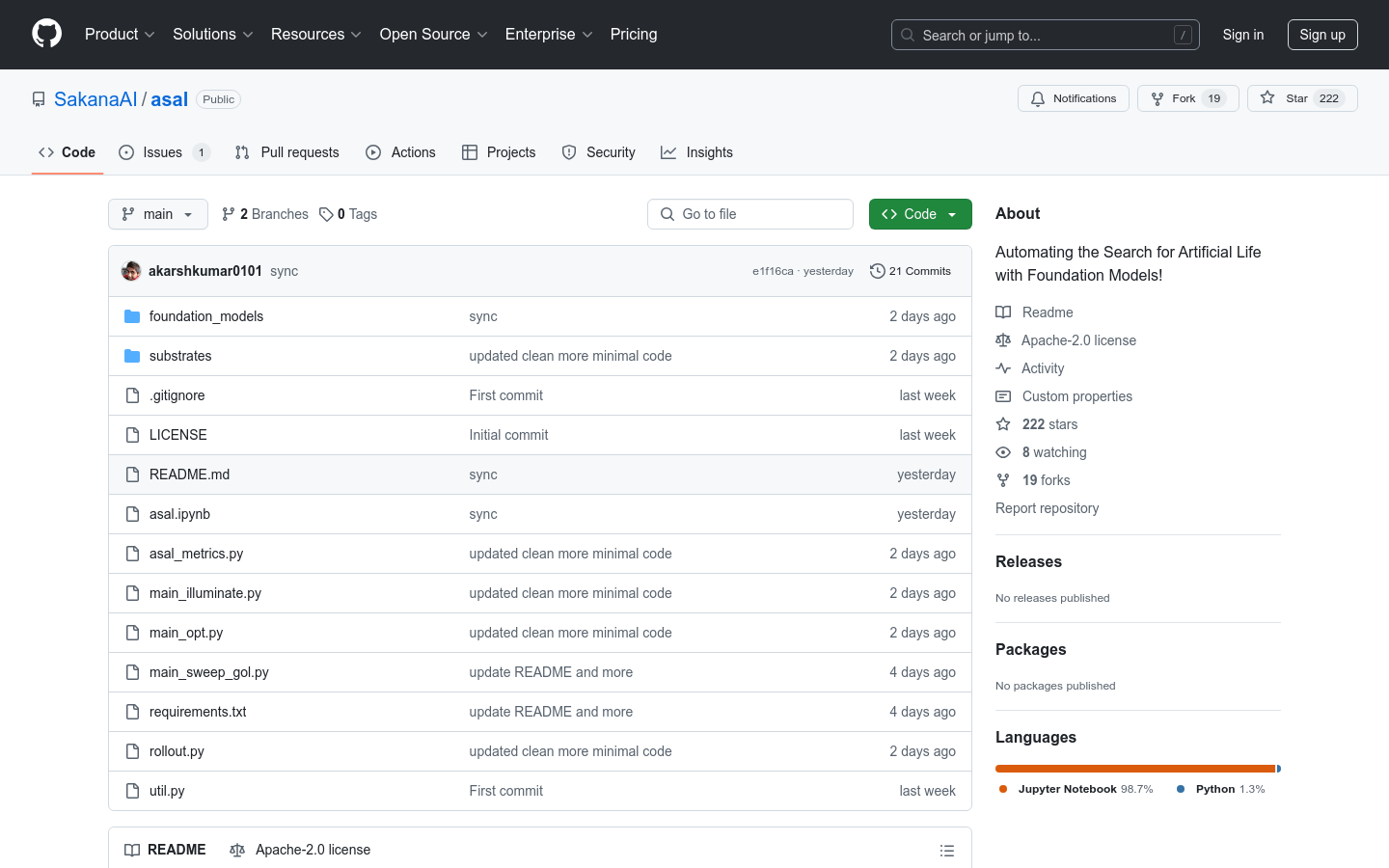

ASAL
Overview :
SakanaAI/asal is a research project that utilizes foundational models (FMs) to automate the search for Artificial Life (ALife). This project combines the latest AI technologies, particularly visual language foundational models, to discover simulations capable of producing target phenomena, generating temporally open novelty, and illuminating the entire fascinating and diverse landscape of simulations. It spans various ALife bases, including Boids, Particle Life, Game of Life, Lenia, and neural cellular automata, showcasing the potential of technological means to accelerate artificial life research.
Target Users :
The target audience includes researchers and developers in the fields of Artificial Intelligence and Artificial Life, as well as scholars interested in automated search and simulating life. SakanaAI/asal provides a platform for them to leverage the latest AI technologies to explore and discover new phenomena in artificial life, accelerating their research processes.
Use Cases
Researchers use SakanaAI/asal to discover new forms of Lenia life.
Developers utilize this project to explore open questions in the Game of Life base.
Scholars quantify qualitative phenomena in artificial life using SakanaAI/asal.
Features
? Utilize visual language foundational models to discover simulations that produce target phenomena.
? Explore simulations that generate temporally open novelty.
? Illuminate the entire fascinating and diverse simulation space.
? Support various ALife bases such as Boids and Particle Life.
? Accelerate artificial life research through technological means.
? Discover previously unseen forms of life in Lenia and Boids.
? Quantify previously qualitative phenomena using foundational models in a human-aligned manner.
How to Use
1. Visit the GitHub page of SakanaAI/asal and clone the project to your local machine.
2. Set up the Python environment and install the necessary libraries according to the project documentation.
3. Run Jupyter Notebook (asal.ipynb) to learn how to manipulate files and visualize results.
4. Run various main program files as needed, such as main_opt.py, main_illuminate.py, and main_sweep_gol.py.
5. Use the provided code templates to sample random simulation parameters and run the simulations.
6. Assess the openness of the simulations and adjust parameters based on the results.
7. Analyze and document experimental results for further research and development.
Featured AI Tools

Gemini
Gemini is the latest generation of AI system developed by Google DeepMind. It excels in multimodal reasoning, enabling seamless interaction between text, images, videos, audio, and code. Gemini surpasses previous models in language understanding, reasoning, mathematics, programming, and other fields, becoming one of the most powerful AI systems to date. It comes in three different scales to meet various needs from edge computing to cloud computing. Gemini can be widely applied in creative design, writing assistance, question answering, code generation, and more.
AI Model
11.4M
Chinese Picks

Liblibai
LiblibAI is a leading Chinese AI creative platform offering powerful AI creative tools to help creators bring their imagination to life. The platform provides a vast library of free AI creative models, allowing users to search and utilize these models for image, text, and audio creations. Users can also train their own AI models on the platform. Focused on the diverse needs of creators, LiblibAI is committed to creating inclusive conditions and serving the creative industry, ensuring that everyone can enjoy the joy of creation.
AI Model
6.9M













